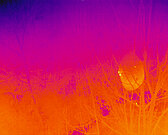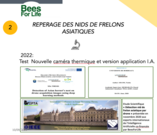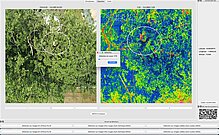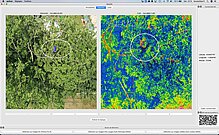Detecting hornet nests using cameras and artificial intelligence
How can you diagnose the presence of Asian hornet Vespa Velutina Nigrithorax nests in tree canopies as early as possible?
The aim is to eliminate these insects, which have been declared "invasive alien species of concern to the European Union".
The innovative technique, currently being evaluated, involves exploring vegetated areas where there is a suspicion that hornet nests are present. The suspected presence of hornets can be seen in the proximity of apiaries whose bee swarms are stressed or immobilised by having hornets in a static position capturing bees in front of the bees' flight boards. Bees make up around 40% of the food bowl of Asian hornet colonies, which have no natural enemies in Europe.
This exploration technique is carried out using a drone equipped with both a visual and a thermal camera. The images produced are then analysed in post-production using Artificial Intelligence recognition and calculation software to identify the shapes and hot spots in the images and pinpoint the locations where nests are suspected.
To implement this solution, the project needs to have a lot of data accumulated on this model over the last 3 years so that the mathematical applications based on Artificial Intelligence (AI) can be 'trained' to recognise nests. The application is being trained to integrate the differences created by different types of location, topography, vegetation, seasons, nest size and operating conditions that vary with the seasons....
Bees For Life started this project in 2017 and has ongoing study programmes in Artificial Intelligence with LaBRI (Laboratoire Bordelais de Recherche en Informatique: Univesité de Bordeaux)





